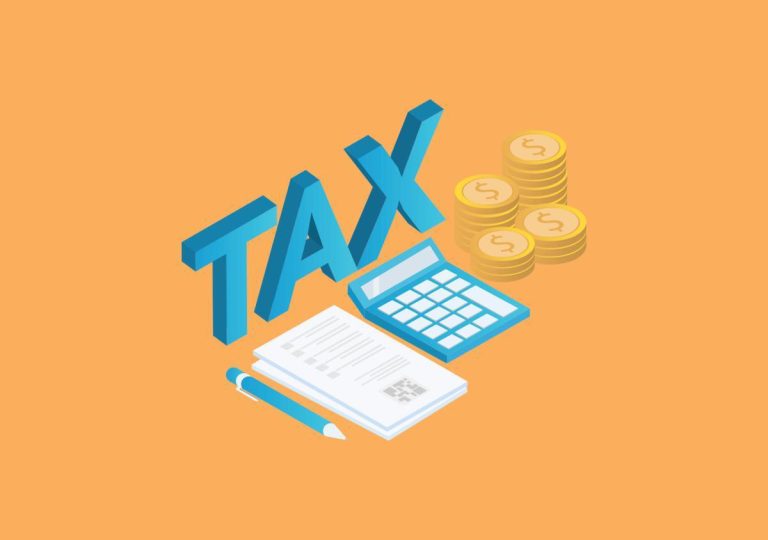Under Hong Kong Financial Reporting Standard 9 Financial Instruments (HKFRS 9), the local equivalent of International Financial Reporting Standard, applies for accounting periods beginning on or after 1 January 2018. In general, the standard requires more financial instruments – both assets and liabilities – to be accounted for on a fair value basis.
As held by the Court of Final Appeal in November 2013 in the case of Nice Cheer Investment Limited v. Commissioner of Inland Revenue FACV 23/2012, such a basis of accounting can include profits or losses which would be regarded as being unrealized or anticipated for tax purposes, and should therefore be non-taxable or non-deductible as the case may be.
The decision of Nice Cheer would mean that taxpayers would have to make tax adjustments to accounting profits or losses recognized under HKFRS 9, or previously under Hong Kong Accounting Standard 39 Financial Instruments: Recognition and Measurement (HKAS 39), to exclude unrealized profits or losses when they file tax returns.
Despite the decision of Nice Cheer, many taxpayers have however expressed a desire to file their tax returns on a fair value basis. In doing so, these taxpayers hope to avoid the trouble of tracking transactions on a realization basis for tax reporting purposes.
In response to requests by such taxpayers, as an interim administrative measure, the Inland Revenue Department has since 2013/14 accepted tax returns where taxpayers have chosen to file on a fair value basis.
To provide more clarity and certainty, the government has now introduced the Inland Revenue (Amendment) (No. 7) Bill 2018 (the bill) to codify the interim administrative measure into the Inland Revenue Ordinance (IRO).
The bill will apply retrospectively in relation to a year of assessment for which the basis period begins on or after 1 January 2018.
Key provisions of the bill
Election required – specific provisions for transition and exit arrangements
Tax assessment on a realization basis will be the default position for all taxpayers. Those who prepare financial statements in accordance with HKFRS 9, and wish to align the tax treatment with the accounting treatment, can make an election in writing pursuant to the proposed section 18H of the IRO.
Upon election, the alignment of the tax treatment with the accounting treatment will apply to both the year of assessment and all subsequent years. Furthermore, all profits or losses of the prior years which would have been taxable or deductible had the provisions of the bill been applied, will also be taxable or deductible in the year of assessment for which the election is made.
The election will cease to have effect (i) when the taxpayer ceases to prepare their financial statements under HKFRS 9; or (ii) the Commissioner of Inland Revenue (CIR) approves an application in writing by the taxpayer to revoke the election. The CIR may approve such an application where he is satisfied that there are good commercial reasons for the revocation and that avoidance of tax is not the main purpose, or one of the main purposes, of the revocation. Such a revocation will apply from the year of assessment as specified by the CIR.
Exceptions apply where alignment of accounting and tax treatment may not occur
While the provisions of the bill to align the tax and accounting treatments will generally override any existing provisions of the IRO, the new provisions will not affect existing capital-revenue and onshore-offshore nature of the financial instrument de ned under the IRO.
As a result, subsequent to a taxpayer making the relevant election, and subject to certain exceptions, most notably the treatment of expected credit losses (ECL) recognized under HKFRS 9, the accounting profits or losses recognized on financial instruments would generally also be the taxable profits or losses provided they are revenue and onshore in nature, i.e. unrealized profits or losses would be taxable or deductible, and the timing of the recognition of interest income and expense from a tax perspective would follow that under HKFRS 9.
Under this general scheme of alignment, the bill nonetheless provides for certain specific exceptions where the accounting and tax treatment of financial instruments may not align. Some of these exceptions are discussed below.
Impairment loss of financial assets in the form of ECL
HKFRS 9 requires entities to recognize at initial recognition an impairment loss in the form of an allowance for ECL on various types of financial assets including loans and trade receivables that are not measured at fair value through profit or loss, regardless of whether a credit loss event has occurred.
Previously, under HKAS 39, an entity only considered those impairments that arose as a result of incurred loss events. The effects of possible future loss events was not considered, even when they were expected.
HKFRS 9 has now introduced an ECL model which broadens the information that an entity is required to consider when determining its expectation of impairment. Under this broader ECL model, expectations of future events must be taken into account and may result in both earlier and larger recognitions for impairments.
General approach and simplified approach to applying the ECL model under HKFRS 9
There are two main approaches to applying the ECL model under HKFRS 9 – the general approach and the simplified approach.
The general approach involves a three-stage process and introduces some new concepts such as “significant increase in credit risk,” “12-month ECL” and “lifetime ECL.”
At Stage 1, only 12-month expected credit losses are recognized in the ECL. Stages 2 and 3 apply when there is a significant increase in credit risk as the financial assets concerned are regarded as either underperforming (Stage 2) or non-performing (Stage 3). Under HKFRS 9, only ECL made at Stage 3 would be considered as credit-impaired.
HKFRS 9 nonetheless recognizes that implementing the general approach can be complex in practice. As a result, the simplified approach has been developed for trade receivables, contract assets and lease receivables, under certain conditions.
Under the simplified approach, there is no need to conduct ongoing monitoring to detect significant increases in credit risk. Rather, entities will be required to measure lifetime ECL at all times.
Deduction provisions for ECL
The proposed sections 18K(3)-(5) specify that an impairment loss in the form of ECL recognized under HKFRS 9 both in respect of loans made in the ordinary course of a money-lending business in Hong Kong and trade receivables (previously included as a trading receipt) would be deductible provided that the financial assets are credit-impaired.
While “credit-impaired” is not defined in the bill, it is defined in HKFRS 9, and the definition in HKFRS 9 will apply to the interpretation of section 18K(3).
Transfer of credit-impaired loan not made by way of a sale in the ordinary course of business
The proposed sections 18K(6)-(8) specify the tax treatment for situations where a credit-impaired loan of a financial institution, with a loss allowance for ECL, is transferred not by way of a sale in the ordinary course of the business of the transferor and where a tax deduction was previously allowed to the transferor in respect of the ECL.
These provisions specify that (i) where on the date of such a transfer, both the transferor and the transferee are in the business of lending money in Hong Kong, the deduction previously allowed to the transferor is treated as having been allowed to the transferee (thereby any subsequent recovery of the ECL by the transferee would explicitly be taxable); and (ii) in any other cases, the amount previously allowed as a deduction is deemed to be a trading receipt of the transferor (thereby the deduction previously allowed to the transferor is clawed back).
Tax treatment of convertible debt securities
Under HKAS 32 Financial Instruments: Presentation, an issuer of convertible debt securities (which provide an option to the holder of the debt securities to convert the securities into the issuer’s own shares) is required to reflect the liability and equity components (i.e. the option rights) of such debt securities separately on their statement of financial position (or balance sheet), if the option rights are to exchange a fixed number of the issuer’s shares for a fixed amount of cash.
At initial recognition, the issuer is required to measure the liability component at fair value (as if there was no equity component), and the equity component will be the difference between the fair value of the convertible debt securities as a whole and the fair value of the liability component. Thereafter the issuer is required to amortize the discount/premium to the income statement, the discount/premium so amortized being the difference between the redemption price and the debt liability component of the convertible debt securities initially recognized.
The proposed section 18L(6) specifies that the part of the discount/premium that is attributable to the equity component of such convertible debt securities is not tax deductible.
Commentary
We welcome the introduction of the bill which provides solid legal backing for the adoption of fair value accounting for tax reporting purposes by election. This legislative proposal for Hong Kong is also more flexible than the corresponding legislation in Singapore where the adoption of fair value accounting for tax reporting purposes is mandatory.
It is of note that section 18K(3), which grants tax deductions for ECL in respect of financial assets including loans and trade receivables, is an additional provision to that of section 16(1)(d) which governs tax deductions for bad debt. These two tax provisions therefore address the same subject matter.
While section 18K(3) is presumably based on the more objective accounting rules and evidence, tax deduction for bad debt under section 16(1)(d) is generally considered to be more subjective. One of the conditions for deduction under section 16(1)(d) being whether a taxpayer can prove to the satisfaction of the assessor that a debt has become bad.
The government may therefore need to clarify how these two tax provisions will operate when the tax outcomes of these two provisions differ.
In addition, the government may also consider whether Hong Kong should follow Singapore and, under certain conditions, grant tax deductions for ECL to banks and qualifying finance companies in respect of their loans or debt securities that are not credit-impaired. Hong Kong’s adoption of rules similar to those in Singapore would enable financial institutions in Hong Kong to compete with their counterparts in Singapore on a more level playing field.
The government may also need to explain why it considers that there is a need for the proposed claw-back of tax deductions for ECL previously granted to the transferor as a financial institution, where the transfer is not made by way of a sale in the ordinary course of business under sections 18K(6)-(8).
While the transfer may not be by way of a sale in the ordinary course of business, provided that the transfer is on arm’s length terms under the transfer pricing regime recently enacted, there does not appear to be a need to claw-back in full the tax deductions for ECL previously granted.
Furthermore, the government may need to elaborate why it considers that part of the interest, discount, premium or expense recognized under HKFRS 9 in respect of convertible debt securities would not be tax deductible under section 18L(6) as being attributable to the equity component of the securities. An elaboration is needed because such interest, discount, premium or expense appears to relate wholly to the debt liability component of the convertible debt securities.
Tracy Ho is Asia-Pacific Business Tax Services Leader at EY, Patrick Kwong is Executive Director and Kathy Kun, is Tax Senior Manager, of EY Tax Services
















